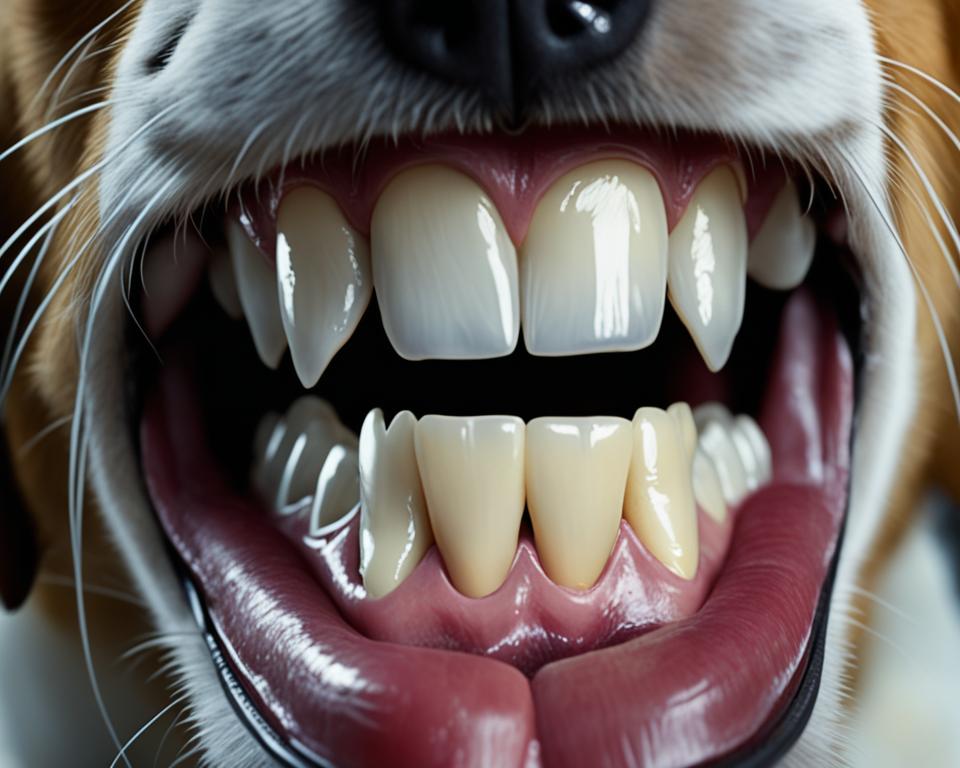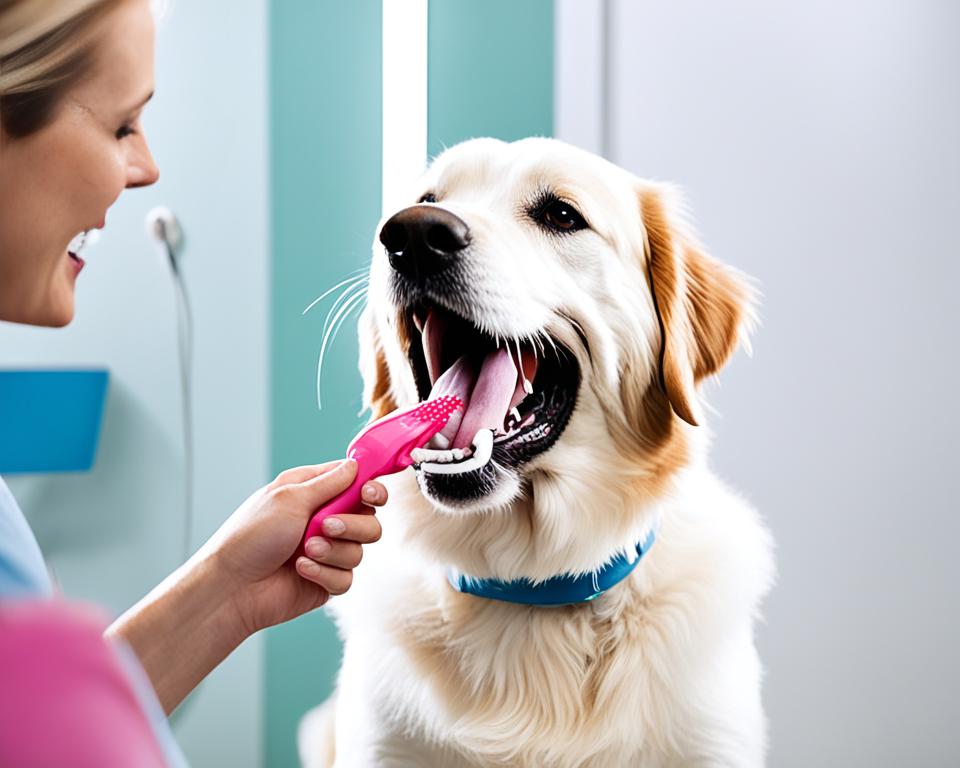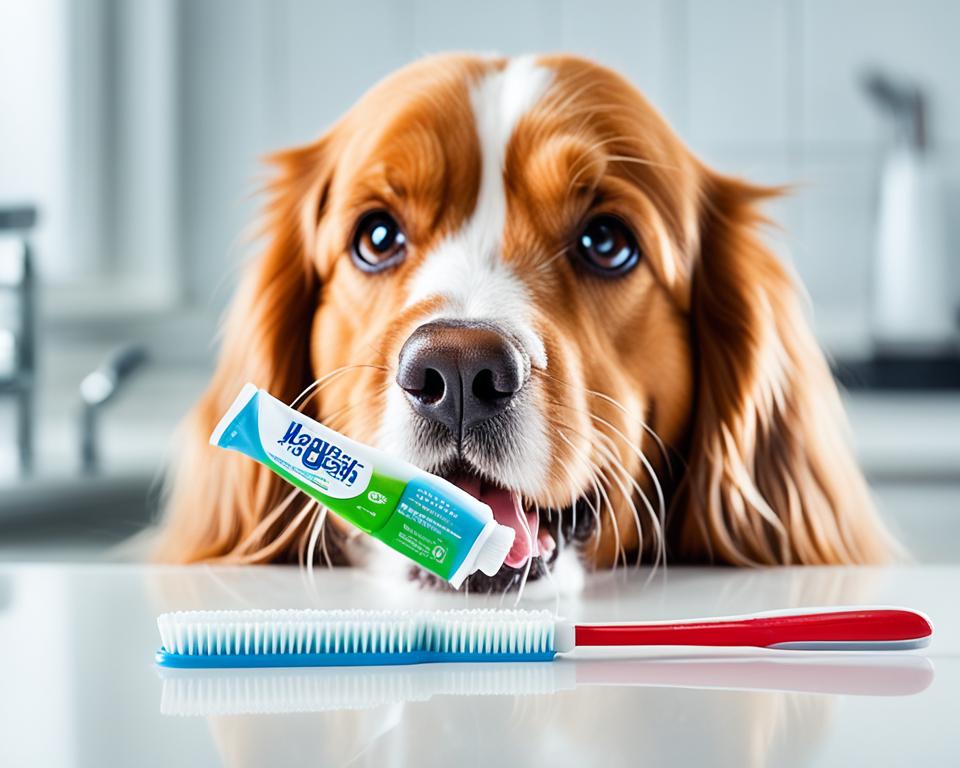As a dog owner, I’ve learned that keeping your dog’s teeth clean is key. Most dogs have dental problems by age three. That’s why I want to share tips for happy, healthy dogs.
Good dental care is not just for fresh breath. It protects our pets from serious health issues. Untreated dental problems can cause tooth loss, pain, and even heart disease. That’s why I focus on dental care for my pet.
This guide will cover how to keep your dog’s mouth healthy. We’ll look at brushing and other ways to clean your dog’s teeth. Let’s learn how to care for our dogs’ teeth together!
Understanding Canine Dental Health
Canine dental health is key to a dog’s overall well-being. Many pet owners don’t realize its importance, leading to dental problems in dogs. Let’s look at why oral hygiene is important for dogs and how to spot problems early.
The Importance of Oral Hygiene for Dogs
Good oral hygiene is vital for dogs. Sadly, over 80% of dogs have periodontal disease, the most common health issue in dogs. Regular dental care can stop this and other problems, helping dogs live happier, healthier lives.

Signs of Dental Problems in Dogs
Spotting dental disease in dogs early can help a lot. Here are some signs to watch for:
- Bad breath
- Yellow or brown tartar buildup on teeth
- Red, swollen gums
- Difficulty eating or loss of appetite
- Pawing at the mouth
- Blood in saliva or food bowl
Consequences of Neglecting Dental Care
Not caring for your dog’s dental health can cause big problems. Canine periodontal disease can lead to tooth loss, infections, and affect vital organs. It’s scary that 80% of dogs show dental disease signs by age two, showing the need for early, consistent care.
| Dental Issue | Prevalence | Potential Consequences |
|---|---|---|
| Periodontal Disease | 80% of dogs by age 2 | Tooth loss, organ damage |
| Fractured Teeth | Up to 63% in wild dogs | Pain, infection, difficulty eating |
| Bad Breath | Common in untreated dogs | Sign of underlying dental issues |
To fight these problems, check out dog bad breath remedies and start a regular dental care routine. Remember, preventing problems is easier than curing them for your pup’s teeth!
Dog Dental Care: Essential Practices for Pet Owners
Keeping our furry friends’ teeth clean is very important. By age three, over 80% of dogs show signs of dental disease. That’s why I’m sharing some key practices for dog dental care.
Dog tooth brushing is the best way to go. I brush my pup’s teeth at least three times a week, aiming for daily if I can. Using dog-specific toothpaste and brushes makes it easier and more effective.

For dogs who don’t like brushing, dog dental wipes are a good choice. They’re simple to use and help remove plaque. I mix these with dental chews approved by the Veterinary Oral Health Council to keep my dog’s mouth healthy.
Getting regular dental cleanings from a vet is also key. Most vets suggest this every six to twelve months. It costs a bit, but it prevents bigger health problems later.
| Dental Care Method | Frequency | Benefits |
|---|---|---|
| Tooth Brushing | 3-7 times per week | Removes plaque, prevents tartar |
| Dental Wipes | Daily | Easy alternative, reduces bacteria |
| Professional Cleaning | Every 6-12 months | Deep clean, checks for issues |
| Dental Chews | Daily | Reduces plaque, entertains dog |
A consistent routine is crucial. By following these practices, we can help our dogs keep their teeth and gums healthy for a long time.
Brushing Your Dog’s Teeth: A Step-by-Step Guide
Brushing your dog’s teeth is key to their health. I’ll show you how to do it easily with your dog.
Choosing the Right Toothbrush and Toothpaste
It’s important to pick the right toothbrush and toothpaste for your dog. Use finger brushes for dogs under 30 pounds and longer handles for bigger dogs. Always choose toothpaste made for dogs, not humans, as it can be harmful.

Techniques for Successful Teeth Brushing
Make brushing teeth a calm time. Use small circles to clean the teeth on both sides. Aim for two minutes each time.
Start on the outside teeth and move to the inside. Sometimes, you might see a little blood, but too much means it’s not good.
Establishing a Dental Care Routine
Being consistent with dental care is important. Even brushing three times a week helps a lot. Start by letting your dog get used to you touching their mouth.
Then, introduce the toothbrush and toothpaste slowly. Always give your dog a treat after brushing to make it a positive experience.
| Brushing Frequency | Benefits |
|---|---|
| Daily | Optimal plaque removal, best prevention of dental issues |
| 3 times a week | Significant improvement in oral health |
| Once a week | Minimal benefit, may not prevent all dental problems |
With patience and these steps, you can keep your dog’s teeth healthy.
Alternative Methods for Maintaining Canine Oral Health
Brushing is key for dog dental care, but it’s hard to do every day. That’s why we have other ways to help. Dog dental chews, treats, and toys are great for your dog’s teeth.
Dog dental chews help remove plaque and tartar as your dog chews on them. They have ridges and nubs that clean teeth. Dental treats are tasty and also help with oral health. Make sure to pick treats your vet says are good and safe.
Dog chew toys are also a good choice. Toys made of rubber or nylon can clean gums and remove plaque. But, avoid hard items like bones or antlers that could hurt your dog’s teeth. Choose toys made for dental health and change them often to keep your dog safe.
These alternatives are useful, but they can’t replace a vet’s care. Regular vet check-ups are still important. Using both at-home care and vet cleanings will help your dog keep a healthy smile.

